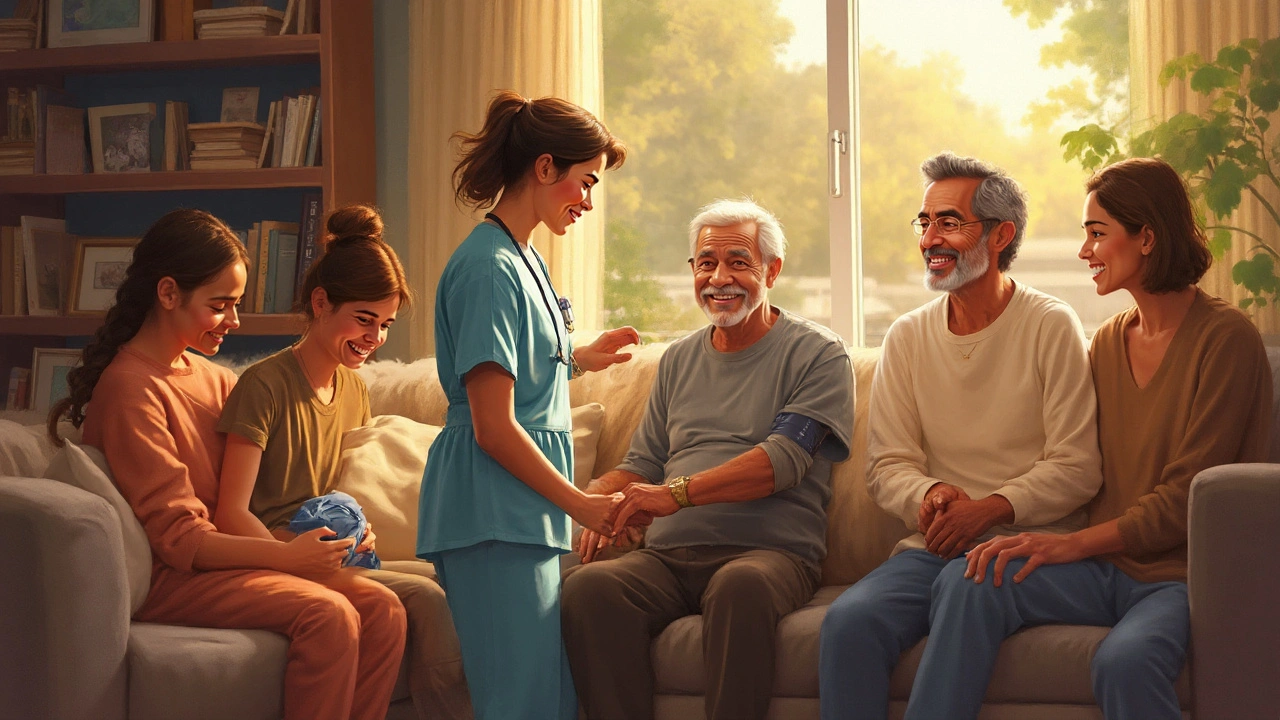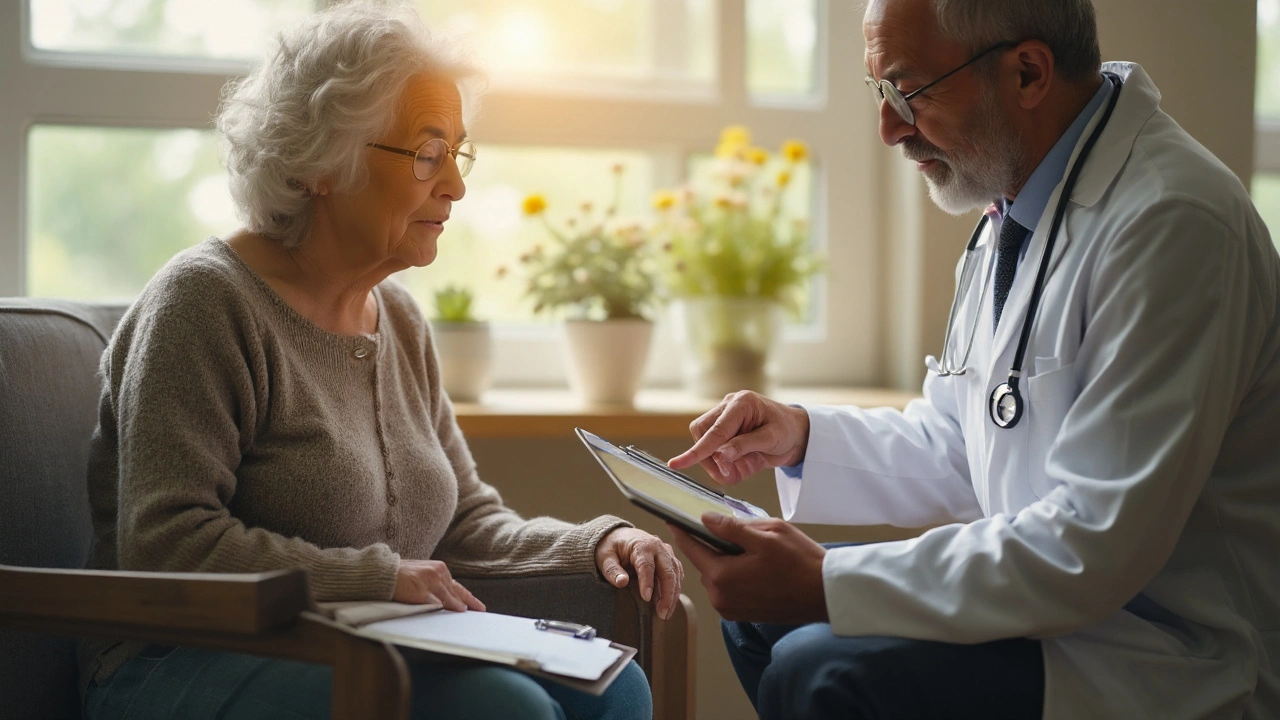Lymphoma is a cancer of the lymphatic system that includes Hodgkin and non‑Hodgkin subtypes. It becomes increasingly prevalent as the population ages, with more than 60% of new diagnoses now occurring in people over 65.
Why Age Matters in Lymphoma Care
Older adults bring a set of biological changes that alter how the disease behaves and how treatments work. Immunosenescence is the gradual decline of the immune system with age, reducing the body’s ability to recognize and destroy malignant cells. This decline also raises the risk of treatment‑related infections. In addition, aging often comes with comorbidities, such as heart disease or diabetes, which can limit the intensity of chemotherapy that can be safely delivered.
Key Clinical Challenges
- Higher incidence of aggressive lymphoma subtypes in people over 70.
- Reduced tolerance to standard chemotherapy regimens.
- Greater likelihood of drug‑drug interactions due to polypharmacy.
- Limited clinical trial data that specifically target the elderly.
- Balancing curative intent with quality‑of‑life considerations.
Geriatric Assessment: The First Decision‑Making Tool
A comprehensive Geriatric Assessment (GA) evaluates functional status, cognition, nutrition, social support, and comorbidity burden. When performed before treatment, GA can predict chemotherapy toxicity with up to 80% accuracy.
Within GA, the Frailty Index quantifies vulnerability on a scale of 0 (robust) to 1 (very frail). Studies from Australia and the United States show that patients with a frailty index >0.35 have a 2‑fold higher risk of early treatment‑related mortality.
Tailoring Treatment: From Conventional Chemo to Targeted Options
Traditional Chemotherapy regimens such as CHOP (cyclophosphamide, doxorubicin, vincristine, prednisone) remain the backbone for many non‑Hodgkin lymphomas. However, dose reductions or “mini‑CHOP” protocols are increasingly used for patients over 75 to lessen cardiac and myelosuppressive toxicity.
Targeted therapies have changed the landscape. Anti‑CD20 monoclonal antibodies (e.g., rituximab) add efficacy without substantially increasing toxicity. Newer agents like BTK inhibitors (ibrutinib) and BCL‑2 inhibitors (venetoclax) are oral, have predictable safety profiles, and are especially useful for patients who cannot tolerate infusion‑based chemo.
For select high‑risk cases, CAR‑T cell therapy offers curative potential. Real‑world data from 2023‑2024 show that older adults (median age 68) achieve comparable response rates to younger cohorts, but cytokine release syndrome remains a concern, necessitating vigilant monitoring.
Comparison of Major Lymphoma Subtypes in the Elderly
| Attribute | Hodgkin Lymphoma | Non‑Hodgkin Lymphoma |
|---|---|---|
| Typical Age of Onset | 70±5years | 68±7years |
| Incidence (per 100,000) | 1.2 | 7.8 |
| First‑Line Treatment | ABVD chemotherapy + optional radiation | R‑CHOP or mini‑CHOP |
| 5‑Year Survival | 85% | 55% (varies by subtype) |
| Common Toxicities in Elderly | Pulmonary toxicity, neutropenia | Cardiotoxicity, neuropathy, infections |

Supportive Care and Palliative Considerations
Addressing pain, fatigue, and psychosocial stress is as critical as treating the disease itself. Integrating palliative care early-ideally within the first three months of diagnosis-can reduce emergency visits and improve quality of life, according to a 2022 Australian cohort study.
Nutrition support, physiotherapy, and medication reconciliation (to avoid harmful drug‑drug interactions) are practical steps. For patients on Medicare or private health funds, navigating coverage for newer agents like CAR‑T often requires a dedicated case manager.
Practical Checklist for Clinicians
- Perform a comprehensive geriatric assessment before any treatment decision.
- Calculate the Frailty Index to gauge tolerance.
- Consider dose‑adjusted or mini‑chemotherapy protocols for frail patients.
- Screen for immunosenescence‑related infection risk; vaccinate against influenza and pneumococcus.
- Discuss oral targeted agents as alternatives to traditional infusion‑based chemo when appropriate.
- Evaluate eligibility for CAR‑T therapy based on performance status and caregiver support.
- Integrate supportive‑care services from day one.
Future Directions and Research Gaps
Despite advances, several gaps persist. Clinical trials still under‑represent patients older than 75, limiting evidence‑based guidance. Ongoing studies aim to refine frailty‑adjusted dosing algorithms and to test next‑generation bispecific antibodies that may offer high efficacy with minimal infusion time.
Population‑level data from the Australian Cancer Registry indicate a steady rise in lymphoma incidence among those 80+, driven by longer life expectancy and better diagnostic imaging. Policymakers are urged to allocate resources for geriatric oncology training and for subsidising novel therapies under national health schemes.
Related Topics to Explore
Understanding lymphoma in older adults connects with broader concepts such as immunosenescence, precision medicine, and healthcare policy for the elderly. Readers interested in treatment logistics may also want to learn about pharmacogenomics in lymphoma and the role of tele‑oncology for remote monitoring of side effects.
Frequently Asked Questions
What is the typical age of onset for lymphoma in older adults?
Most cases are diagnosed between ages 65 and 75, with a median onset around 68years for non‑Hodgkin lymphoma and 70years for Hodgkin lymphoma.
How does a geriatric assessment change treatment planning?
GA identifies functional and cognitive limitations, predicts chemotherapy toxicity, and helps clinicians choose between full‑dose, mini‑dose, or targeted‑only regimens, thereby reducing avoidable hospitalizations.
Are newer targeted therapies safe for the elderly?
Yes, agents like BTK inhibitors and BCL‑2 inhibitors have shown lower rates of severe neutropenia and cardiac toxicity compared with traditional chemotherapy, making them attractive for frail patients.
When should CAR‑T therapy be considered for older patients?
CAR‑T is an option when the disease is refractory to chemo and the patient has a good performance status (ECOG ≤2), adequate organ function, and reliable caregiver support for post‑infusion monitoring.
What supportive‑care measures improve outcomes?
Early palliative‑care referral, vaccination against influenza and pneumococcus, nutritional counseling, physiotherapy, and medication reconciliation all contribute to reduced toxicity and better quality of life.






Steve Dressler
September 22, 2025 at 19:44
Interesting breakdown. I’ve seen this play out in my dad’s care - the shift from CHOP to mini-CHOP made all the difference. His energy didn’t vanish overnight, and he actually kept fishing on weekends. Sometimes, less really is more.